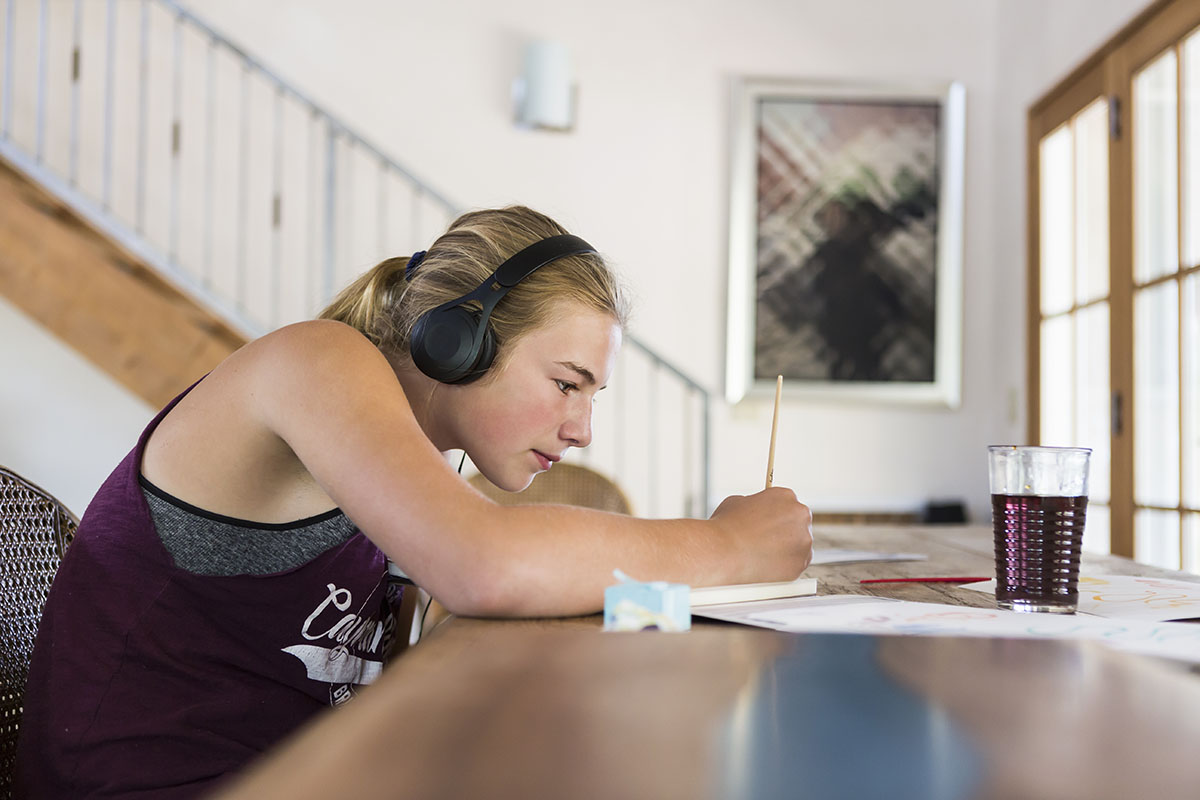
To stop procrastinating, we need to kickstart our momentum. To do that, we need to understand what is happening to our brain.
If you are thinking to yourself, ‘Mmm looks interesting, I might read this article later’, this article is for you.
With momentum, you can fly through things. This article is written for the times when the wheels fall off, everything grinds to a halt, and you consider doing almost anything (including possibly chewing on your own toenails) rather than getting on with what needs to be done.
Putting things off until later and maybe forever has a few major downsides — deadlines and due dates loom larger, bills pile up, unresolved friendship issues take up a lot of our mental space and we lose sleep.
What stops us in our tracks
Usually, people procrastinate because they feel anxious and overwhelmed or just as often, they have lost track of timelines and dates.
Fortunately, we live in a time where devices can remind us of due dates and organisers can schedule events for us. Once we have found a system that works and one we can stick with, it is then a matter of dealing anxiety and overwhelm.
Let’s talk about how to help all students to understand what makes them want to avoid things and sometimes put them off indefinitely.
All young people and need to know how their brains learn. Before we procrastinate we feel agitated and then try to cope with this by avoiding.
Understanding how to shift from avoid and agitate to approach and attach, empowers students to overcome the fears of getting on and doing things that need to be done. It is important for parents and teachers to realise this is not often in the conscious mind of students. It is not like we can provide a pep talk, goal setting session or encourage a growth mindset and hey presto their procrastination will be solved.

Meet Rex and Bronte
The lower, primitive part of our brain contains 80 per cent of our brain cells. Despite this, it is fairly basic and mainly focuses on keeping us alive, safe and comfortable. It doesn’t want to do things that seem hard or risky. It is pretty much the same brain that dinosaurs had. Given its similarities let’s call that part of our brain, ‘Rex’ (after Tyrannosaurus Rex*) or Bronte (after Brontosaurus).
Meet Albert, Albertina, and Alberta
The smarter, more developed, super-computer part of the brain we could call our pre-frontal cortex, but it is kind of cooler to call it our inner ‘Albert ‘ or ‘Alberta’ or ‘Albertina’ after Albert Einstein.
Rex and Bronte work in one way while Albert / Albertina / Alberta operates in an entirely different way. Albert / Albertina / Alberta can make plans, stick to schedules and think things through. Rex and Bronte don’t like to think too much, don’t really respond to words and prefer action.
If Rex or Bronte are ‘out of sorts’ nothing works well. That is why sleep, food and movement all calm Rex and Bronte.
How we procrastinate
Some kids are the ‘masters of minimalism’ or the practitioners of ‘just-in-time management’. Everything is done at the last possible second before it is due or done with as little personal input as possible.
The ‘just-in-time managers’ do anything rather than completing what they need to do. This of course, can be incredibly frustrating for parents and teachers. While this looks like procrastination, it is often an efficient way of completing tasks. There are long periods of what looks like wandering distractibility followed by an intense period of hyperfocus. Once we now this about a neurodivergent kid, we simply need to know their pattern and how to kickstart their hyperfocus without unnecessary drama.
The ‘masters of minimalism’ have equated learning with hard work to be avoided. As a result, they either tend to under-perform or other people make kindly intended but damaging excuses, that result in them never reaching their potential.

How Parents Can Help
While kids who procrastinate can be wonderful to parent and and their quirky, idiosyncratic ways of behaving and thinking can be heart-warming and delightful, there are also times they can make parents want to tear their hair out.
One of those times is when something really needs to be done but they show no signs of doing it. Pep talks and threats of dire consequences don’t work. Parents need to take a long-term planning process to overcoming procrastination to avoid personal anguish and increase their child’s chances of success.
Many kids love the stimulation of computer games. Wise parents use this as a reward and inducement to get tasks done first.
When we start doing something we find we can do easily, our momentum increases. We get ‘on a roll’ and can sidestep procrastination.
Complete the analysis of learning strengths at My Learning Strengths and use the free letter to create a conversation about building on the identified strengths. Discuss these with your child’s teacher(s). Obtaining the full Personalised Learning Success Plan moves you into action and beyond procrastination.
Let’s consider a few ways to utilise different learning strengths to kickstart momentum (a complete discussion would require an entire book, so these are just some starter ideas).
Spatial Reasoning
Kids with learning strengths in spatial reasoning often find it easiest to start by thinking in pictures.
Calming Rex and Bronte
Begin by drawing ideas. Create a flow chart, concept map or just doodling your thoughts will get you into action.
Activating Albert, Albertina, and Alberta
Then discuss the linkages between visual concepts adding them to or subtracting to them from the visual map as the discussion progresses.
Perceptual – Motor Skills
Kids with learning strengths in perceptualmotor skills are usually active people who like doing things.
Calming Rex and Bronte
Routines and rituals at home and school help thesekids to go through the paces of completing a task. Shake off the jitters by doing something active. Say, ‘This is the way we do this’. The aim is for them to roll their eyes with boredom (because they have heard to you say it a thousand times before) and for the task to be completed with as little drama as possible.
Activating Albert, Albertina, and Alberta
Don’t sit around waiting for inspiration. Get moving and get doing. Walk it out, pace it out, step through your main plans.

Concentration and Memory
Learning strengths in concentration can be a great advantage but they can also be an obstacle. Some kids get so focused on the things that they like doing they forget to complete what they need to get done. One way to use your concentration and memory skills is to work out the main thing that you need to do and then work out the first thing you need to do. Remove all other distractions and just start by doing ten minutes.
Calming Rex and Bronte
List everything you remember about a particular topic. Make a focus map (similar to a dart board with the main idea at the centre).
Activating Albert, Albertina, and Alberta
Short bursts of concentration and activity are going to beat marathons. Use a timer. Aim to stretch concentration eventually to 20 minutes of focused activity.
Planning and Sequencing
Learning strengths in this area equip kids to develop plans but not necessarily follow through on them.
Calming Rex and Bronte
Take a planning walk and consider the steps you will need to take to solve this.
Activating Albert, Albertina and Alberta
Imagine forward and plan backwards. Define a goal or outcome you want and then draw or write in sequence the steps needed to create that result. You may find planning occurs more easily using post-it notes for each of the steps.
Thinking and Logic
Sometimes having great thinking skills can get in the way of doing things. Some kids can trap themselves in convoluted loops of thinking that lead nowhere. They may get trapped in weighing up the pros and cons of specific actions. Sometimes this can make them less certain and more worried than they need to be. Help them to stop evaluating and predicting (great skills but you don’t need them now).
Calming Rex and Bronte
Puzzles, riddles, jokes, problem-solving, guessing games. Developing checklists and to-do lists.
Activating Albert, Albertina and Alberta
Start with the easiest thing you can think of.

People Smarts
Kids with this learning strengths are tuned into people. Having someone to work with, will help them to get started.
Calming Rex and Bronte
Combining socialising while getting things done makes it much easier to feel safe and start.
Activating Albert, Albertina, and Alberta
Eventually divide up tasks so you spend time some time working together and also develop self-reliance and independent problem-solving skills.
Language and Word Smarts
The internal dialogue of these kids is often littered with fear, doubt and self-recrimination. Despite their learning strengths in words, they are rarely easily persuaded out of procrastination.
Calming Rex and Bronte
Talk about unrelated issues until calm.
Activating Albert, Albertina and Alberta
Create a story of what will happen if we can get started and make this happen. Imagine the task is already completed and you are telling someone else about the payoffs and benefits.
Number Smarts
Kids with learning strengths in number smarts often like certainty and control.
Calming Rex and Bronte
Rate the tasks to be done and prioritise them. Give them a choice of which to begin first and when to start.
Activating Albert, Albertina and Alberta
Create a to-do or a numbered checklist. Negotiate with yourself that you can only do something you like once you have ticked off and completed one of the items on your list.

Kickstarting Momentum
Procrastination is a barrier for many students. This also becomes a major issue in the lives of many neurodivergent kids.
Kickstarting our momentum begins with calming Rex and Bronte. Rex and Bronte pay attention to what we do, not what we say.
There are three main strategies to overcome procrastination:
- Start small – once we start doing some-thing, Rex and Bronte often go along with it. The hardest part of overcoming almost any challenge is starting.
- Wait for dopamine to replenish. I have outlined how to do this in papers on motivation.
- Do something even worse than the challenging activity you are procrastinating over. Finding something you really don’t like and doing it until you feel like doing the original task is not fun but is surprisingly effective.
Next steps
Schools could ask parents and students to complete the assessment of learning strengths and use this as a basis for collective planning over the next term. This could also be integrated with career planning for senior students.
More tips and resources from Andrew
More tips about how to maximise your success can be found at:
Andrew’s websites
www.andrewfuller.com.au
www.mylearningstrengths.com (45,000 young people in the past year discovered their learning strengths and found how to increase success and motivation).
Books for parents
Tricky Conversations
Tricky Teens and Emerging Adults: A survival guide for parents
Unlocking Your Child’s Genius: How to discover and encourage your child’s natural talents
Books for teachers
Guerilla Tactics for Teachers: The Essential Classroom Management Guide
Work Smarter, Not Harder: Study skills for students who dislike homework
Tricky Conversations: How to have less conflict and more peace in your life
Neurodevelopmental Differentiation: Optimising Brain Systems to Maximise Learning
About Andrew
Andrew is a clinical psychologist and family therapist, author and speaker, and a regular contributor to The Parents Website.
Like this post? Please share using the buttons on this page.
Stay up to date with our newsletter here


